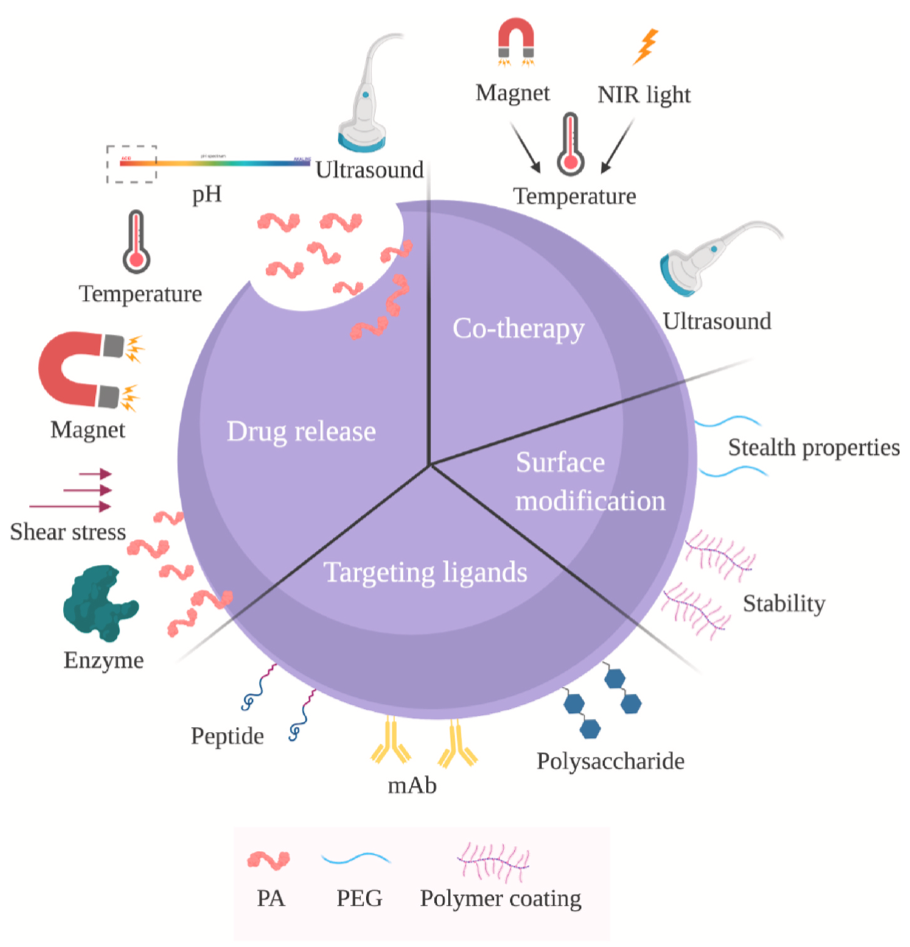Nanomedicine progress in thrombolytic therapy
Zenych A, Fournier L, Chauvierre C
2020 • Biomaterials • [pdf]

Thrombotic occlusions of blood vessels are responsible for life-threatening cardiovascular disorders such as myocardial infarction, ischemic stroke, and venous thromboembolism. Current thrombolytic therapy, the injection of Plasminogen Activators (PA), is yet limited by a narrow therapeutic window, rapid drug elimination, and risks of hemorrhagic complications. Nanomedicine-based vectorization of PA protects the drug from the enzymatic degradation, improves the therapeutic outcomes, and diminishes adverse effects in preclinical models. Herein, we review the pathophysiology of arterial and venous thrombosis and summarize clinically approved PA for the treatment of acute thrombotic diseases. We examine current challenges and perspectives in the recent key research on various (lipid, polymeric, inorganic, biological) targeted nanocarriers intended for the site-specific delivery of PA. Microbubbles and ultrasound-assisted sonothrombolysis that demonstrate thrombolysis enhancement in clinical trials are further discussed. Moreover, this review features strategies for the rational design of nanocarriers for targeted thrombolysis and effective PA encapsulation in view of interactions between nanomaterials and biological systems. Overall, nanomedicine represents a valued approach for the precise treatment of acute thrombotic pathologies.

